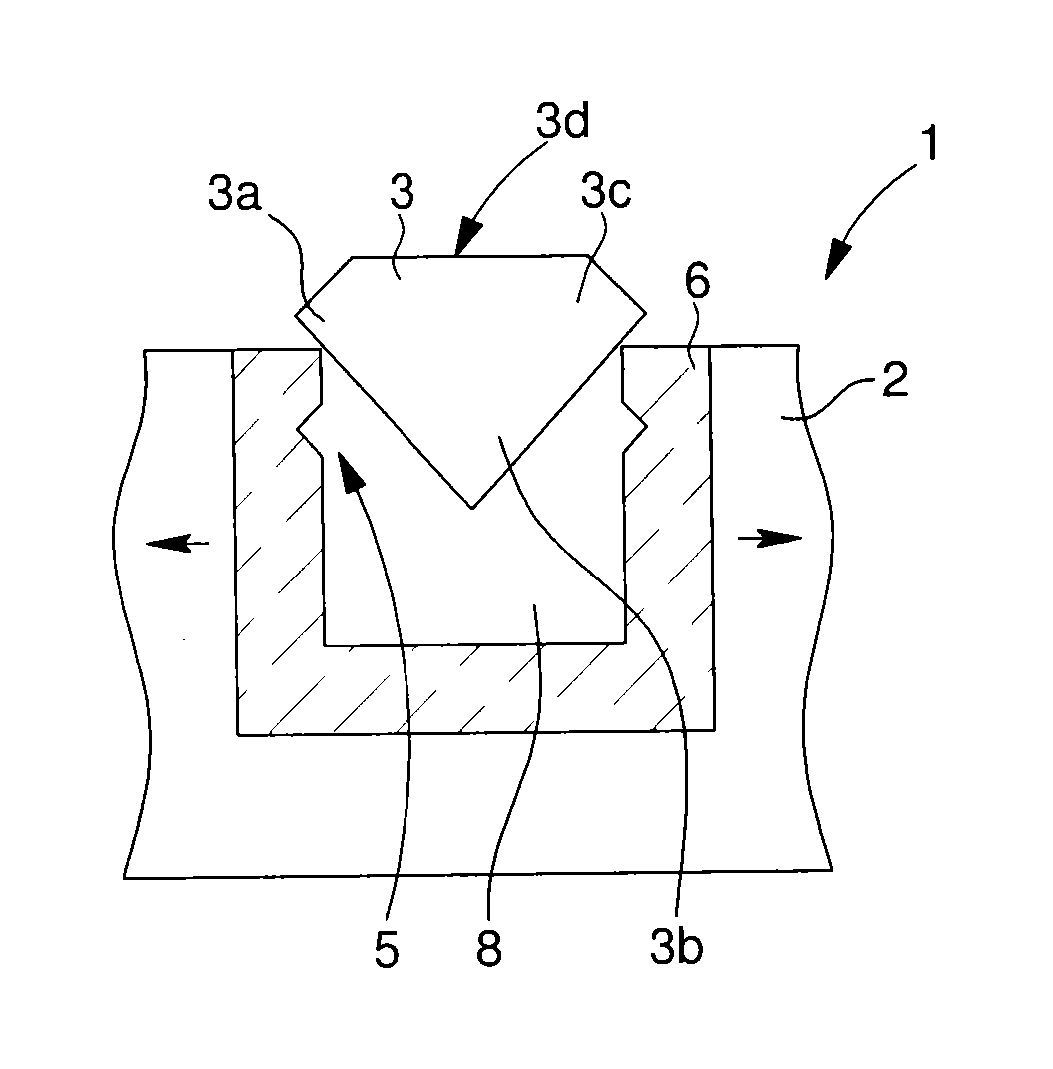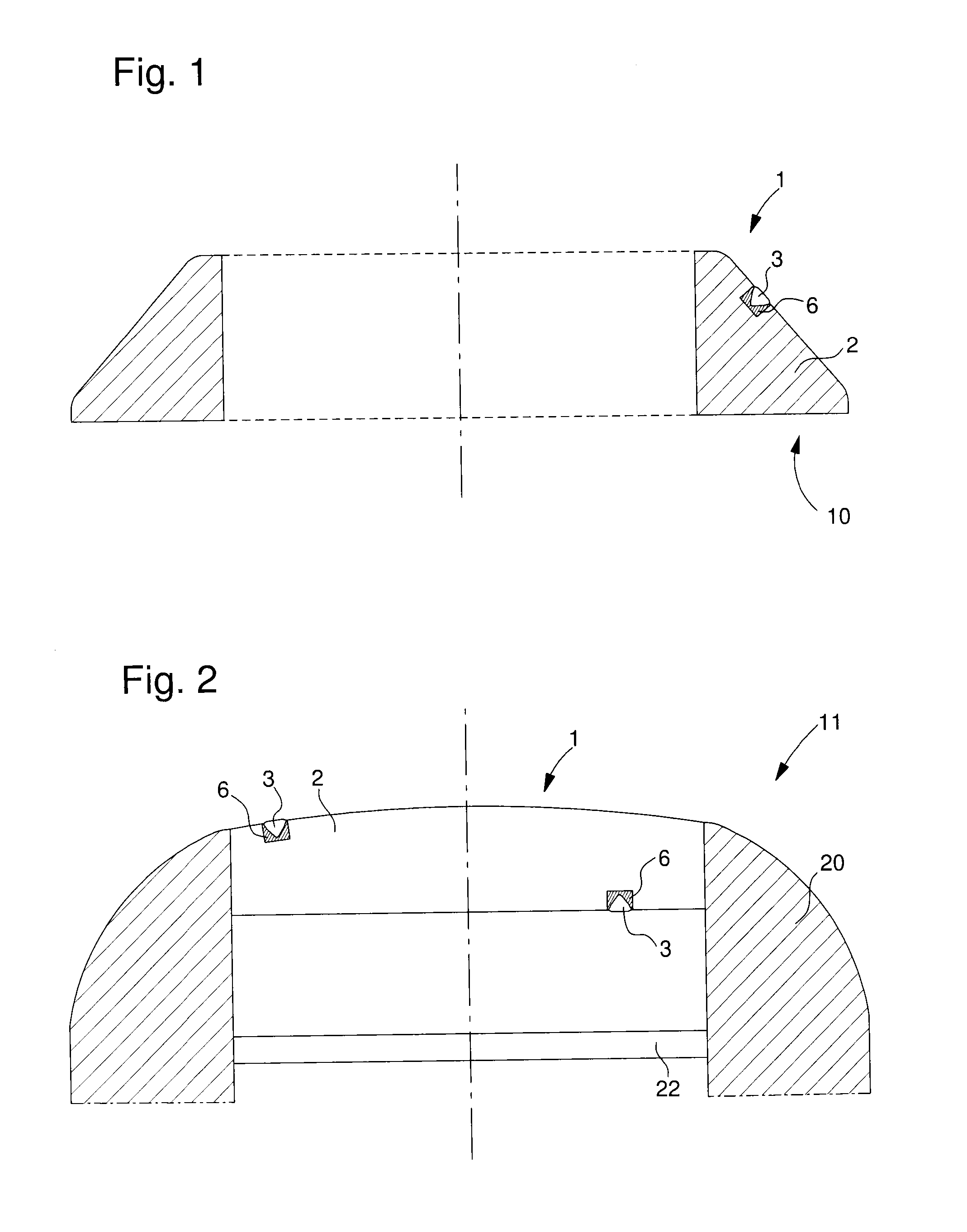Decorative piece produced by setting on amorphous metal
a technology of amorphous metal and decorative elements, applied in the direction of decorative arts, thin material processing, ornamental structures, etc., can solve the problems of not being able to guarantee the retention of stones 100%, the current method of setting aesthetic elements cannot be used, etc., to achieve the effect of improving the retention of at least one aesthetic elemen
- Summary
- Abstract
- Description
- Claims
- Application Information
AI Technical Summary
Benefits of technology
Problems solved by technology
Method used
Image
Examples
first embodiment
[0091]A first embodiment is used in the case where the amorphous alloys accommodate permanent deformation and have elastic limits which are not too high, typically less than 1,500 MPa: the setting method is identical to that used for crystalline metals, i.e. cold plastic deformation of the beads 9 produced in the amorphous alloy.
second embodiment
[0092]A second embodiment is used in the case where the amorphous alloys have elastic limits which are too high for cold plastic deformation, typically greater than 1,500 MPa: the setting method consists of heating the beads 9 to a temperature greater than the glass transition temperature Tg of the amorphous metallic alloy in order to reduce greatly the viscosity and therefore the force necessary for deformation thereof. Once the beads 9 are at the right temperature, they are deformed so that the setting can take place. A cooling operation is then effected in order to solidify them and to make it possible to make the setting definitive. This solution has the advantage of allowing an intimate contact between the amorphous metallic alloy and the aesthetic element 3, which improves retention of the latter. In fact, in the case of cold plastic deformation, as much for crystalline metals as amorphous ones, elastic resilience operates during release of the force applied on the bead 9. Thi...
third embodiment
[0093]A third embodiment is used when the amorphous alloys are difficult to set by cold or hot plastic deformation. This embodiment consists of making use of the high elastic deformation of amorphous alloys, typically 2%, in contrast to crystalline alloys which deform plastically from 0.5%. The method consists of pressing the aesthetic element 3 into the setting hole of the substrate 6. Under pressure, the amorphous metallic alloy of the substrate 6 deforms elastically making it possible for the aesthetic element 3 to be inserted. When the catching means 5, in the shape of a setting recess, and the girdle or end or the edge 3a of the aesthetic elements 3 are situated one opposite the other, an elastic resilience operates. The elastic resilience of the catching means 5 on the aesthetic element 3 makes it possible to retain the latter definitively, as can be seen in FIGS. 15 and 16.
PUM
| Property | Measurement | Unit |
|---|---|---|
| distance | aaaaa | aaaaa |
| breaking elongation | aaaaa | aaaaa |
| breaking elongation | aaaaa | aaaaa |
Abstract
Description
Claims
Application Information
 Login to View More
Login to View More - R&D
- Intellectual Property
- Life Sciences
- Materials
- Tech Scout
- Unparalleled Data Quality
- Higher Quality Content
- 60% Fewer Hallucinations
Browse by: Latest US Patents, China's latest patents, Technical Efficacy Thesaurus, Application Domain, Technology Topic, Popular Technical Reports.
© 2025 PatSnap. All rights reserved.Legal|Privacy policy|Modern Slavery Act Transparency Statement|Sitemap|About US| Contact US: help@patsnap.com



